5 Reasons Why Wearing High Heels Every Day Is Bad for Your Health: Risks to Avoid
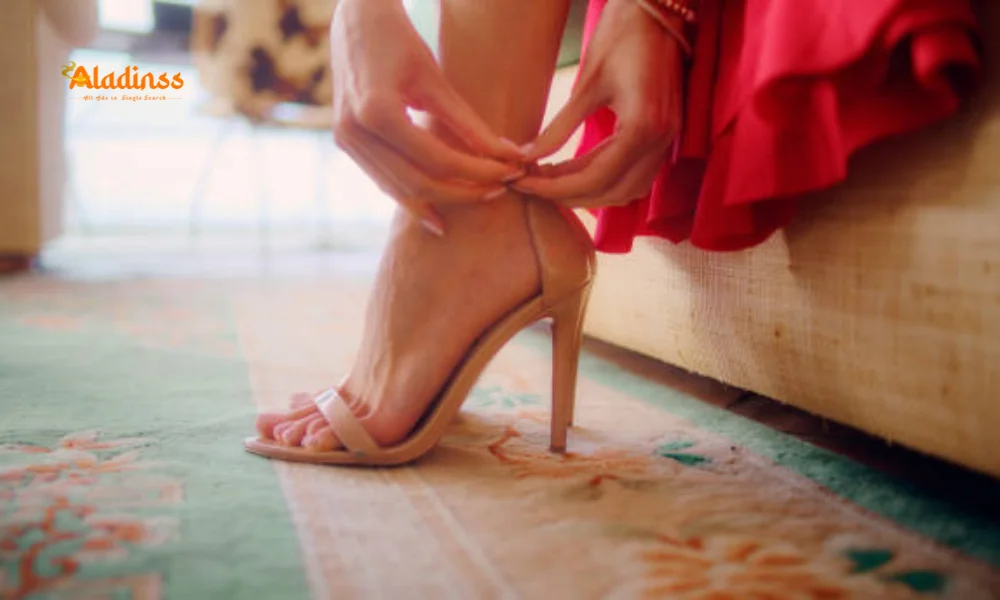
5 Reasons Why Wearing High Heels Every Day Is Bad for Your Health: Risks to Avoid
High heels may elevate your style, but wearing them daily can take a serious toll on your health, from chronic foot pain to spinal issues. This breaking news health update explores five critical reasons why frequent high heel use is harmful, including increased forefoot pressure, toe deformities, altered biomechanics, spinal strain, and skin issues like corns. As Google trends show rising searches for "high heels health risks" and hashtags like #HighHeelsHealth and #FootCare trending on social media, understanding these dangers is essential for women prioritizing both fashion and well-being. Whether you're a professional in stilettos or a fashion enthusiast, this article highlights why you should reconsider daily high heel wear to protect your long-term health.
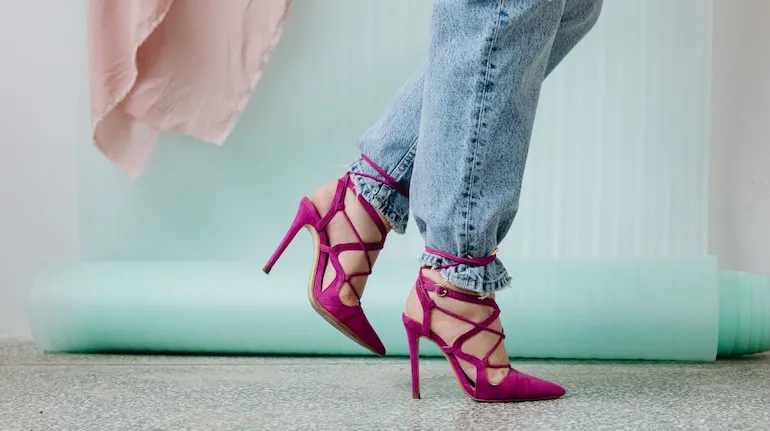
Increased Pressure on the Forefoot
Wearing high heels daily places excessive pressure on the forefoot, where the ball of the foot bears the brunt of your body weight. This unnatural distribution can lead to chronic pain and inflammation, often diagnosed as metatarsalgia, a condition causing sharp or burning pain in the ball of the foot. The elevated heel shifts weight forward, forcing the toes and metatarsal bones to absorb impact typically distributed across the entire foot. Over time, this pressure can cause stress fractures, nerve irritation, and even joint issues, making daily activities painful.
Studies indicate that heels above 2 inches increase forefoot pressure by up to 75%, significantly raising the risk of discomfort. For women wearing heels for extended periods, such as in corporate settings or social events, this strain accumulates, leading to long-term damage. Opting for lower heels or supportive flats during daily routines can mitigate these risks, preserving foot health while maintaining style. Awareness of this issue is growing, with podiatrists recommending alternating footwear to reduce forefoot stress and prevent chronic conditions.
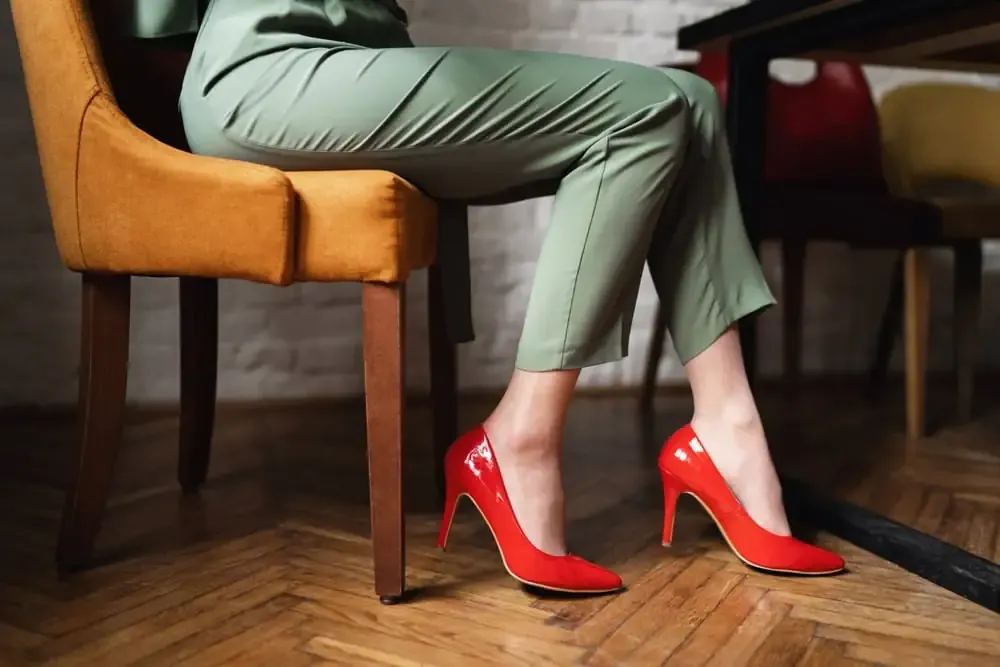
Toe Deformities from Prolonged High Heel Use
Daily wear of high heels, particularly pointy-toe stilettos, can lead to toe deformities such as hammertoes and bunions. The confined, narrow toe box forces toes into unnatural positions, causing the toe joints to bend abnormally over time. Hammertoes occur when toes curl downward, leading to pain and difficulty fitting into regular shoes. Bunions, characterized by a bony protrusion at the base of the big toe, develop from prolonged pressure and misalignment, often requiring surgical correction in severe cases.
These deformities are not just cosmetic; they cause significant discomfort and can impair mobility. Podiatric research suggests that women wearing heels over 3 inches daily are 60% more likely to develop bunions than those opting for wider, lower shoes. The risk is higher with pointy-toe designs, common in fashion-forward heels, which exacerbate toe crowding. To prevent these issues, experts recommend choosing shoes with a wider toe box and limiting heel height to under 2 inches for regular wear, especially for those standing or walking for hours daily.

Altered Biomechanics and Injury Risks
High heels fundamentally alter the body's natural biomechanics, shifting weight forward and disrupting the alignment of the feet, ankles, and legs. This elevation changes posture, forcing the body to compensate by leaning backward, which increases the risk of ankle sprains and falls. The raised heel also shortens the Achilles tendon, leading to tightness in the tendon and calf muscles. Over time, this can cause Achilles tendinitis, a painful condition that limits mobility and requires extensive rehabilitation.
The altered biomechanics extend beyond the feet, affecting the knees and hips. Research shows that daily high heel wear increases knee joint stress by 20-25%, contributing to osteoarthritis risk. Sprains are particularly common in uneven terrains or crowded settings, where heels reduce stability. To counter these effects, experts suggest incorporating stretching exercises and wearing supportive shoes periodically to maintain tendon flexibility and reduce injury risks, ensuring safer movement in daily life.
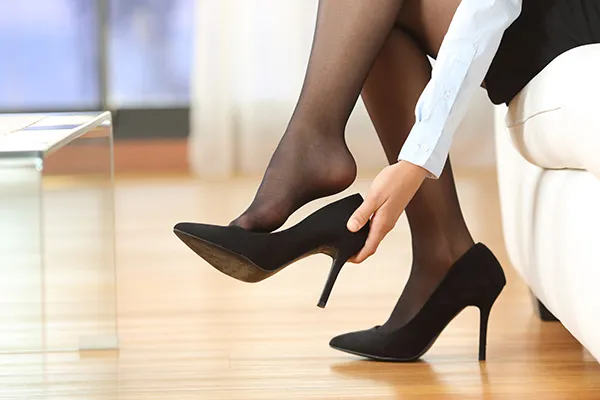
High Pressure on the Spine
The impact of daily high heel wear extends beyond the feet to the spine, where altered posture increases pressure on the lumbar region. Heels force the pelvis to tilt forward, exaggerating the spine's natural curve and causing lower back pain. This misalignment can lead to chronic discomfort, with studies linking prolonged heel use to a 30% higher incidence of lower back issues among women. Over time, this pressure may contribute to spinal disc compression and alignment changes, affecting overall posture and mobility.
The spine's increased load also affects the neck and shoulders, as the body compensates to maintain balance. For professionals standing or walking in heels for hours, this strain accumulates, potentially leading to conditions like sciatica. To mitigate spinal stress, health experts recommend alternating with flat shoes, using lumbar support, and practicing core-strengthening exercises like yoga. These measures help maintain spinal health, allowing women to enjoy heels occasionally without long-term consequences.
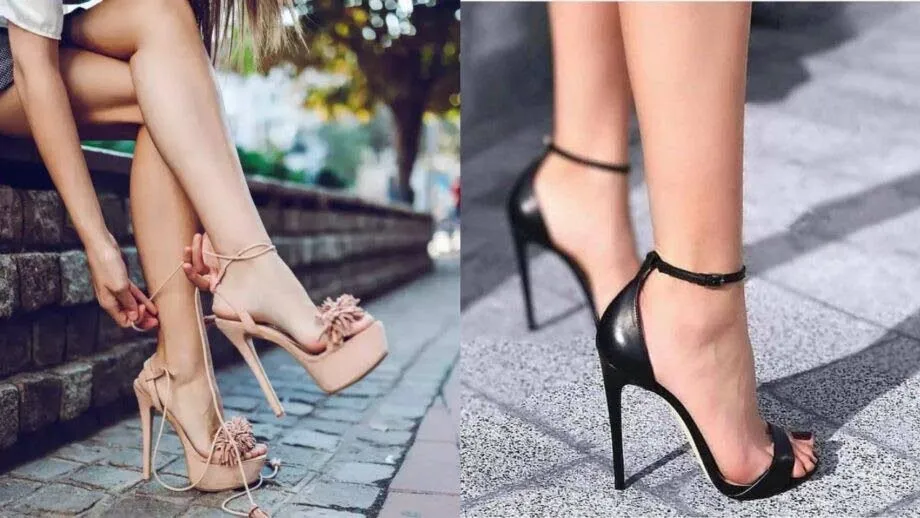
Corns, Calluses, and Loss of Natural Grip
High heels often cause corns and calluses due to repeated pressure and friction, particularly in tight or narrow designs. These thickened skin areas, while protective initially, become painful and require regular maintenance like pumicing or professional care. Corns, typically found on toes, and calluses, often on the heel or ball, can lead to discomfort during walking, especially in shoes lacking cushioning. Additionally, high heels reduce natural grip due to their design, increasing slip risks on slick surfaces.
The lack of shock absorption in most heels exacerbates these issues, as the foot absorbs more impact, leading to fatigue and instability. Data suggests that 40% of women wearing heels daily develop calluses within a year. To prevent these problems, experts advocate for shoes with better traction and cushioning, alternating with flats, and moisturizing feet to reduce skin hardening. These steps ensure safer, more comfortable daily wear while maintaining foot aesthetics.
Long-Term Health Implications and Alternatives
The cumulative effects of daily high heel wear can lead to serious health issues, including chronic pain, joint degeneration, and reduced mobility. Beyond foot-specific conditions like neuromas, the altered biomechanics and spinal pressure increase risks of arthritis and disc issues. Women are advised to limit heel use to special occasions, opting for supportive footwear like wedge sandals or low-heeled pumps for daily wear. Orthotic inserts can provide additional support, redistributing weight and reducing strain.
Fashion brands are responding with stylish flats and low heels that combine aesthetics with comfort, catering to health-conscious consumers. Regular foot exercises, such as toe stretches and calf raises, can maintain flexibility and strength. By prioritizing foot health, women can enjoy fashion without sacrificing well-being, aligning with the growing trend of sustainable, health-focused style choices in 2025.
Comment / Reply From
No comments yet. Be the first to comment!






